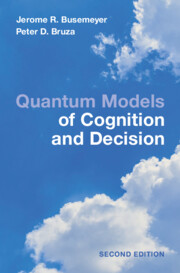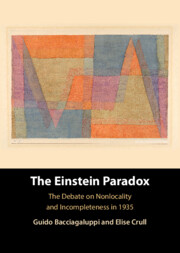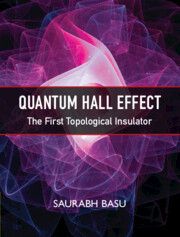Refine search
Actions for selected content:
3336 results in Quantum Physics, Quantum Information and Quantum Computation
3 - Advanced Quantum Probability
-
- Book:
- Quantum Models of Cognition and Decision
- Published online:
- 14 November 2024
- Print publication:
- 21 November 2024, pp 60-96
-
- Chapter
- Export citation
1 - Introduction
-
- Book:
- Quantum Models of Cognition and Decision
- Published online:
- 14 November 2024
- Print publication:
- 21 November 2024, pp 1-20
-
- Chapter
- Export citation
Acknowledgments
-
- Book:
- Quantum Models of Cognition and Decision
- Published online:
- 14 November 2024
- Print publication:
- 21 November 2024, pp xvi-xvi
-
- Chapter
- Export citation
12 - Quantum Bayesian Networks and Quasi-Probability
-
- Book:
- Quantum Models of Cognition and Decision
- Published online:
- 14 November 2024
- Print publication:
- 21 November 2024, pp 345-362
-
- Chapter
- Export citation
5 - Advanced Quantum Probability Applications
-
- Book:
- Quantum Models of Cognition and Decision
- Published online:
- 14 November 2024
- Print publication:
- 21 November 2024, pp 129-177
-
- Chapter
- Export citation
Appendix A - Notation and Proofs
-
- Book:
- Quantum Models of Cognition and Decision
- Published online:
- 14 November 2024
- Print publication:
- 21 November 2024, pp 400-402
-
- Chapter
- Export citation
Frontmatter
-
- Book:
- Quantum Models of Cognition and Decision
- Published online:
- 14 November 2024
- Print publication:
- 21 November 2024, pp i-iv
-
- Chapter
- Export citation
8 - Information Processing
-
- Book:
- Quantum Models of Cognition and Decision
- Published online:
- 14 November 2024
- Print publication:
- 21 November 2024, pp 247-271
-
- Chapter
- Export citation
7 - Advanced Dynamics
-
- Book:
- Quantum Models of Cognition and Decision
- Published online:
- 14 November 2024
- Print publication:
- 21 November 2024, pp 210-246
-
- Chapter
- Export citation
Preface
-
- Book:
- Quantum Models of Cognition and Decision
- Published online:
- 14 November 2024
- Print publication:
- 21 November 2024, pp xi-xv
-
- Chapter
- Export citation
Index
-
- Book:
- Quantum Models of Cognition and Decision
- Published online:
- 14 November 2024
- Print publication:
- 21 November 2024, pp 433-440
-
- Chapter
- Export citation
14 - Contributions and Future Directions
-
- Book:
- Quantum Models of Cognition and Decision
- Published online:
- 14 November 2024
- Print publication:
- 21 November 2024, pp 386-399
-
- Chapter
- Export citation
6 - Introductory Dynamics
-
- Book:
- Quantum Models of Cognition and Decision
- Published online:
- 14 November 2024
- Print publication:
- 21 November 2024, pp 178-209
-
- Chapter
- Export citation
References
-
- Book:
- Quantum Models of Cognition and Decision
- Published online:
- 14 November 2024
- Print publication:
- 21 November 2024, pp 409-432
-
- Chapter
- Export citation
Contents
-
- Book:
- Quantum Models of Cognition and Decision
- Published online:
- 14 November 2024
- Print publication:
- 21 November 2024, pp vii-x
-
- Chapter
- Export citation
4 - Elementary Quantum Probability Applications
-
- Book:
- Quantum Models of Cognition and Decision
- Published online:
- 14 November 2024
- Print publication:
- 21 November 2024, pp 97-128
-
- Chapter
- Export citation

Quantum Models of Cognition and Decision
- Principles and Applications
-
- Published online:
- 14 November 2024
- Print publication:
- 21 November 2024

The Einstein Paradox
- The Debate on Nonlocality and Incompleteness in 1935
-
- Published online:
- 14 November 2024
- Print publication:
- 28 November 2024

Quantum Hall Effect
- The First Topological Insulator
-
- Published online:
- 31 August 2024
- Print publication:
- 23 January 2025
References
-
- Book:
- Building Quantum Computers
- Published online:
- 29 November 2024
- Print publication:
- 11 July 2024, pp 233-234
-
- Chapter
- Export citation
